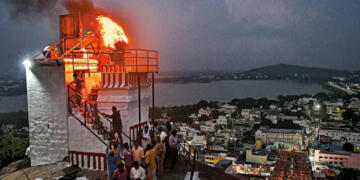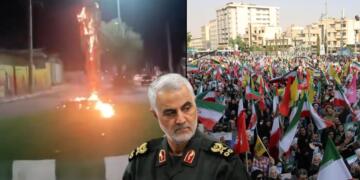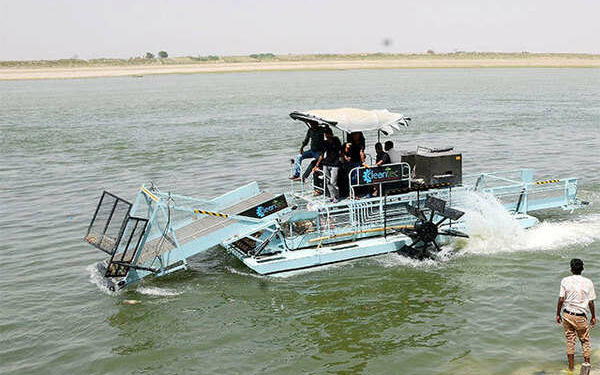The Ganga action plan was started in 1986
The Ganga action plan was started by Shri Rajeev Gandhi, the then Prime Minister of India in January 14, 1986, with the main objective of reducing pollution, improving water quality through interception, diversion and treatment of domestic wastewater and current industrial and toxic substances. Chemical wastes from units identified as extremely polluting entering the river.
An important step to clean up the river has been in place since 1985, with the launch of the Ganga Action Plan (GAP). However, more impetus is required to get rid of the river of pollution, which the government aims to achieve by 2030.
The other objectives of the Ganges Action Plan are as follows
-Control of diffuse pollution by agricultural runoff, human defecation, cattle rolling, and throwing unburned and half-burned bodies into the river. Rehabilitation of softshell turtles has been shown and found useful to reduce river pollution.
-Research and Development to conserve the biotic diversity of the river to increase its productivity. New sewage treatment technology such as up flow anaerobic sludge blanket (UASB) and sewage treatment by afforestation have been successfully developed.
-Resource recovery options such as methane production for power generation and using aquaculture for income generation have been demonstrated.
-Act as a trendsetter to undertake similar action plans on other heavily polluted stretches of other rivers.
-The ultimate objective of the GAP is to have an integrated watershed management approach considering the diverse dynamic interactions between abiotic and biotic ecosystems.
Central Pollution Control Board of India’s studies
A 2012 CPCB study found that 85% of pollutants end up in the Ganga and 2.723 million liters of untreated wastewater are dumped into the river every day. CPCB estimates that in 2012, 2,523 MLD of wastewater was generated in the rivers of the North Indian Plain, of which the installed treatment capacity was only 1,208 MLD (44%). In fact, healthy water is not only sparkling clean, but a natural consequence of a rejuvenated river. Later, the central government issued a notification setting limits for the minimum water flow in the Ganga River, regardless of how many projects use its water. The aim is to capture and treat the wastewater before it is discharged into the Ganga River.
Phase I and II of Ganga Action Plan
Phase I of the Ganga Action Plan project involved the construction of three new wastewater treatment plants that have a combined installed capacity of approximately 101,800m³ per day. The project developer is the Ganga Pollution Prevention Unit of UP Jal Nigam, Varanasi, while the executing agency is the National Ganges River Basin Authority (NGRBA), under the Ministry of Environment and Forests.
Phase II of the project for the city of Varanasi includes the construction of a new 140,000 m3 treatment plant, the planting of 34 km of sewers, the rehabilitation of the existing sewage system and the construction of three new pumping stations in Phulwaria, Chaukaghat and Saria to improve the water quality of the Ganga River.
Also Read : The massive success of PM Modi’s Udan scheme is visible in Post-Pandemic India
Relaunch of the Plan
National Ganga River Basin Authority: Ganga Action Plan was started again in 2009 as NGRBA was established by the Indian central government on 20 February 2009 under Section 3 of the 1986 Environmental Protection Act. The Indian government declared the Ganga to be the national river of India. Former Prime Minister Manmohan Singh was the head of the National Ganges River Basin Authority (NRBA. But he, along with two other members, resigned for lack of responsibility and commitment.
The NRBA had been awarded a fund of Rs 3,031 to operate 56 schemes in 44 cities. According to available data, Rs 785 million had already been spent as of September 2013. NRBA was supported by the National Ganges River Basin Project. Till Feb 2014 Rs 939 crore had been spent on the Ganga Action Plan including 524 different schemes.
The Supreme Court has divided the clean-up operation into four sections of the river that runs for more than 2,500 km through Uttarakhand, Bihar, Jharkhand and West Bengal.
NMCG’S ‘Namami Gange Program’ by BJP led Modi Government:
Cleaning the Ganga river and rejuvenating it was one of the Modi government’s most important projects and Ganga Action Plan was again started in 2014. In the seven years since then, data available with the National Mission for a Clean Ganga (NMCG) shows that out of 341 projects, 147 (or 43 percent) are completed. Most of the projects are related to sewerage infrastructure and 61 of 157 sewerage projects have been completed to date (39%).
The ‘Namami Gange Program’ is an integrated conservation mission, approved as a ‘Flagship Program’ by the Union Government in June 2014 with a budgetary outlay of Rs 20,000 crore to achieve the twin goals of effective pollution reduction, conservation and rejuvenation of the National River. The Projects progress, achievements and implementations can be seen here.
Also Read : ODF Full Form, Meaning, Statistics and Guidelines

































